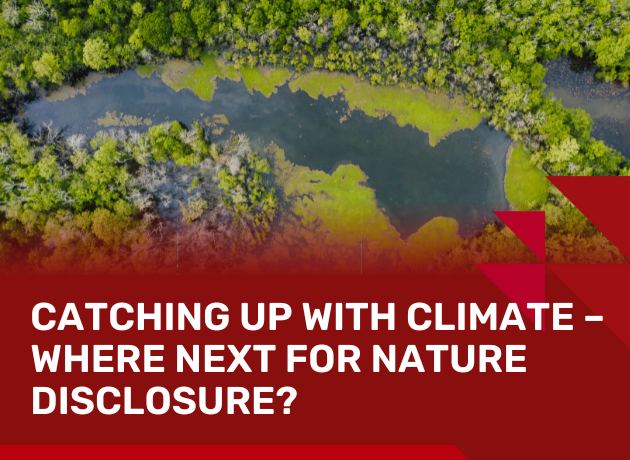
Submitted by elifsena.yaman on November 29, 2023
Frameworks for responding to climate
Companies are progressing in climate action thanks to established frameworks like the Sustainable Development Goals and the Paris Climate Agreement, which offer clear environmental targets. The Science Based Targets Initiative assists companies in setting personalized targets, while the Greenhouse Gas Protocol provides measurement methods. The Taskforce on Climate-Related Financial Disclosures guides on market disclosures, with these frameworks influencing international standards and laws on climate reporting.
Frameworks for responding to ‘nature’
Companies have struggled with unclear guidelines for environmental impact beyond climate, but this is changing with the Global Biodiversity Framework (GBF) and the Science Based Targets Network (SBTN), which provide clearer targets and measurement tools. The Taskforce for Nature Related Disclosure (TNFD) now offers recommendations for non-climate disclosures, influencing updates to standards and legislation.
The remaining challenges of disclosing on nature compared to climate
Addressing nature's challenges in the wake of climate action is complex and resource-intensive. Unlike climate targets, which are clear and quantifiable, nature lacks a global consensus on goals. The impacts on nature are diverse and location-dependent, and global data for nature is insufficient, requiring companies to measure both their impact and the environmental state of their operational areas.
The TNFD LEAP frog
Responding to nature's challenges may lag behind climate, but it benefits from existing progress, like TNFD's nature-focused disclosures mirroring TCFD's structure. TNFD's LEAP framework is crucial, guiding companies through identifying, evaluating, assessing, and preparing responses to environmental relationships. This comprehensive approach enhances a company's understanding of its environmental impact across various areas.
Making sense of the jigsaw
The nature reporting landscape includes overlapping yet independent frameworks, standards, and laws that don't fully align yet. Efforts towards harmonization continue. Key components are:
- International agreements like the Paris Climate Agreement and Global Biodiversity Framework set binding environmental targets.
- Voluntary frameworks, like TNFD’s LEAP, guide comprehensive environmental understanding and disclosure.
- Voluntary standards, in development like GRI’s biodiversity standards, dictate framework application and often need third-party verification.
- Legislation, such as the EU’s emerging ESRS, mandates reporting, influencing international standards and practices.
CDP can bring frameworks, standards and laws together
CDP unites frameworks, standards, and laws for environmental impact transparency. As the largest corporate environmental disclosure entity, CDP gathers data on combating climate change, freshwater impacts, and deforestation in supply chains. It's aligned with the TCFD for climate data and is broadening to include TNFD alignment, aiming to be a comprehensive data hub.
CDP is one of the founding partners of the SBTN. The Science Based Targets Network (SBTN) is a collaboration of leading global non-profits and mission driven organizations working together to equip companies as well as cities with the guidance to set science-based targets for all of Earth’s systems. This will help them define a clear pathway to ensure they are doing enough across their value chain to address their impacts and dependencies on nature. CDP plays a pivotal role in accelerating and institutionalizing science-based targets setting as global best practice. The SBTN builds on the momentum of the Science Based Targets initiative (SBTi).
For further information kindl visit this link.





